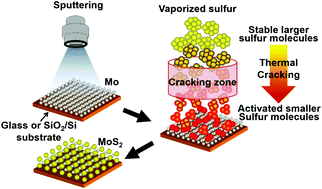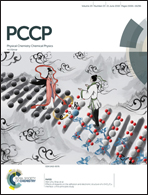Enhanced sulfurization reaction of molybdenum using a thermal cracker for forming two-dimensional MoS2 layers
Abstract
We propose a method to fabricate two-dimensional (2D) molybdenum disulfide (MoS2) layers to overcome issues in typical fabrication processes by promoting the sulfurization reaction of molybdenum (Mo). A thin sputtered-Mo layer was sulfurized using a sulfur (S) thermal cracker to form 2D MoS2 layers. The effects of key process parameters such as cracking-zone temperature (TC-zone), thickness of the sputtered-Mo layer, and Ar pressure during deposition of the Mo layer were systematically investigated. The degree of thermal treatment of evaporated S vapor is controlled by varying TC-zone. The higher TC-zone enabled easy formation of thin MoS2 layers at a low substrate temperature of 250 °C due to the greatly enhanced sulfurization reaction. The thickness of the final MoS2 layers was controlled by changing the initial thickness of the sputtered-Mo film. Ultra-thin MoS2 film about 2-layers-thick was obtained by sulfurizing a 2 Å-thick Mo film. The chemical state of the MoS2 layers largely depended on the Ar pressure during the sputtering process of the initial Mo. Lower Ar pressure enhanced MoS2 formation due to more efficient substitution of the MoS2 phase for the MoO3 phase. By using the S thermal cracker, we demonstrate a method to easily fabricate 2D MoS2 layers, excluding some problematic issues such as toxic and expensive reactants, non-vacuum conditions susceptible to contamination, and high substrate temperature.



 Please wait while we load your content...
Please wait while we load your content...